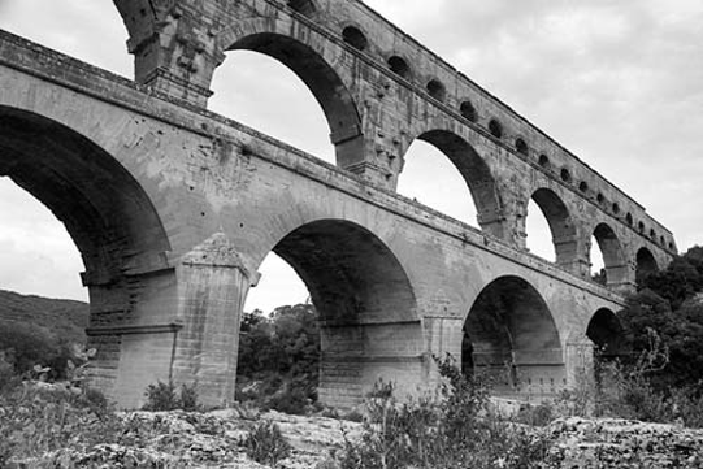Travel Reference
In-Depth Information
passbythecemetery,whichwaslocated outsideoftownforhygienicreasons.You'denter
the main gate and speed past warehouses and apartment houses to the town square (for-
um). Facing the square were the most important temples, dedicated to the patron gods of
the city. Nearby, you'd find bathhouses; like today's fitness clubs, these served the almost
sacred dedication to personal vigor. Also close by were businesses that catered to the cit-
izens' needs: the marketplace, bakeries, banks, and brothels.
Aqueducts brought fresh water for drinking, filling the baths, and delighting the cit-
izens with bubbling fountains. Men flocked to the stadiums in Arles and Nîmes to bet
on gladiator games; eager couples attended elaborate plays at theaters in Orange, Arles,
and Vaison la Romaine. Marketplaces brimmed with exotic fruits, vegetables, and animals
from the far reaches of the empire. Some cities in Provence were more urban 2,000 years
ago than they are today. For instance, Roman Arles had a population of 100,000—double
today's size. Think about that when you visit.
In these cities, you'll see many rounded arches. These were constructed by piling
two stacks of heavy stone blocks, connecting them with an arch (supported with wooden
scaffolding), then inserting an inverted keystone where the stacks met.
Voilà!
The heavy
stones were able to support not only themselves, but also a great deal of weight above the
arch. The Romans didn't invent the rounded arch, but they exploited it better than their

